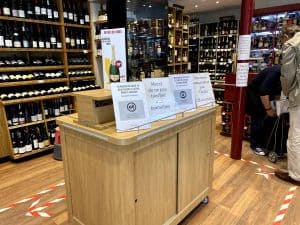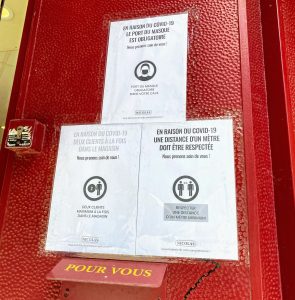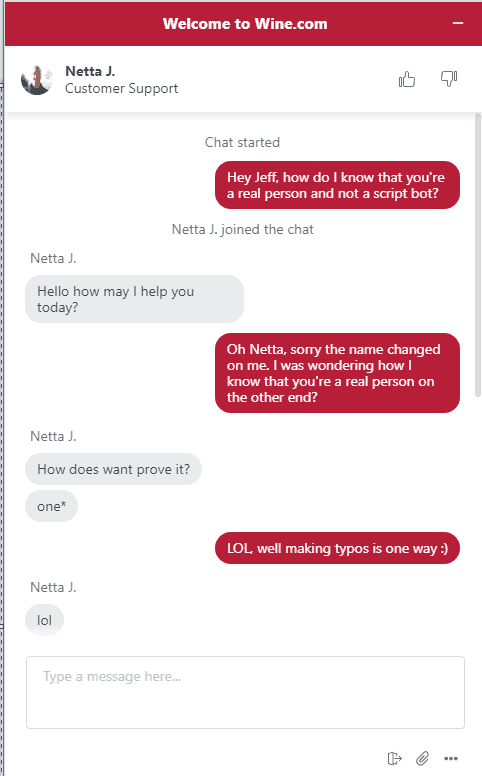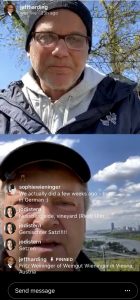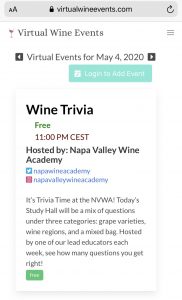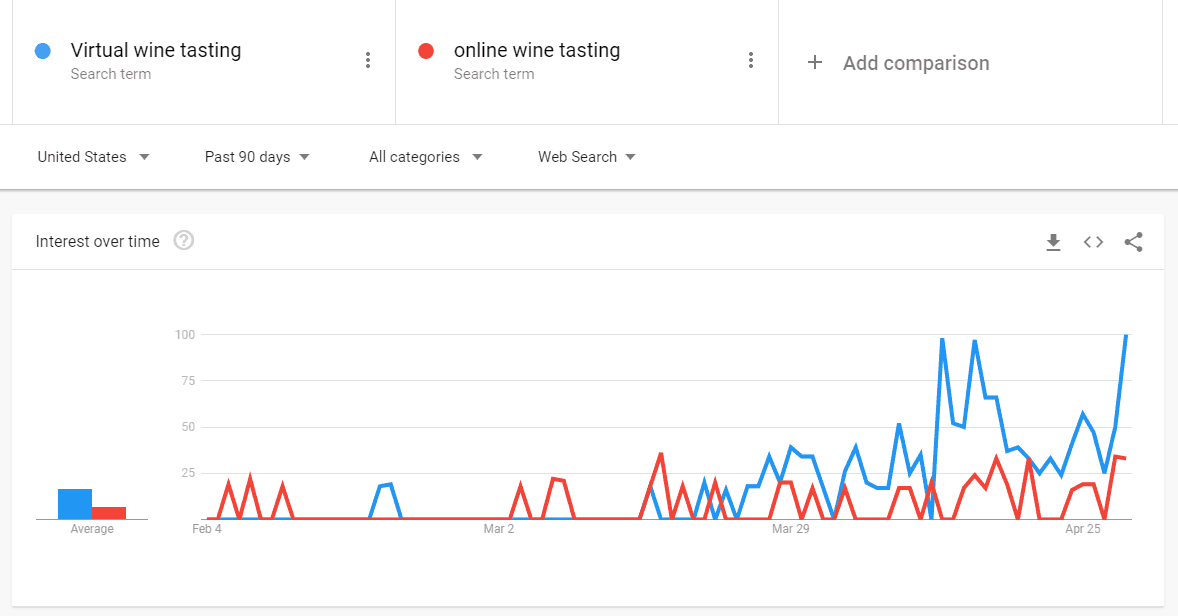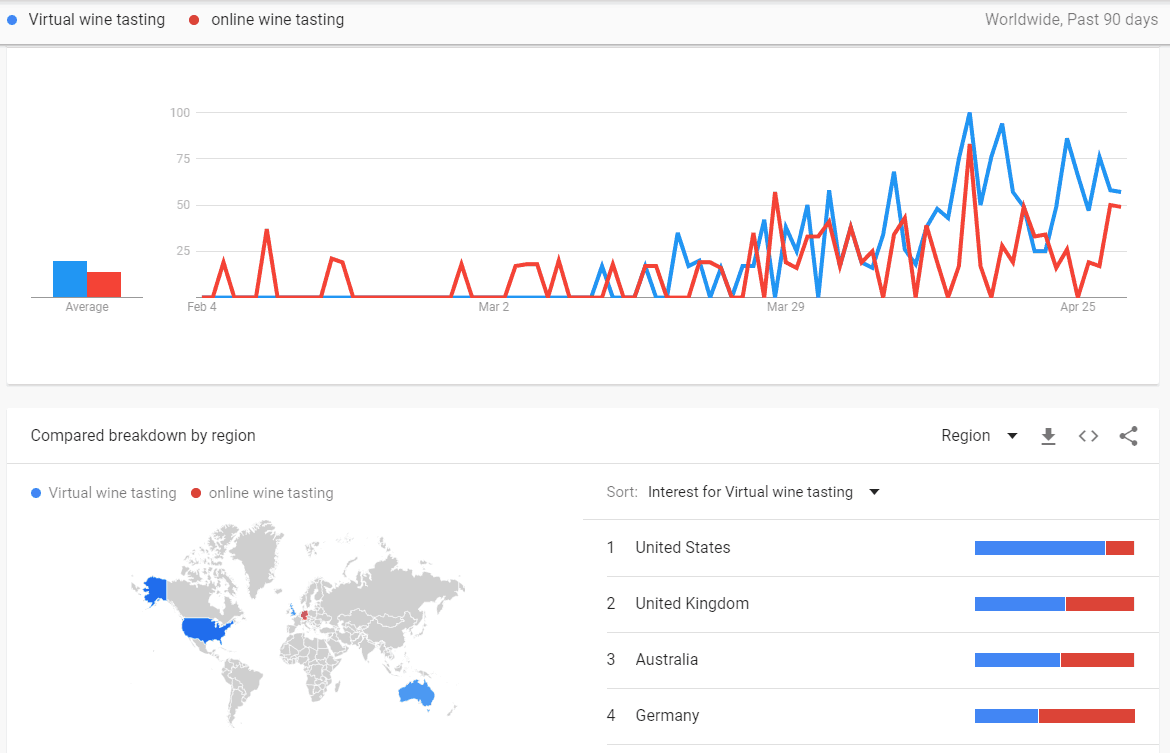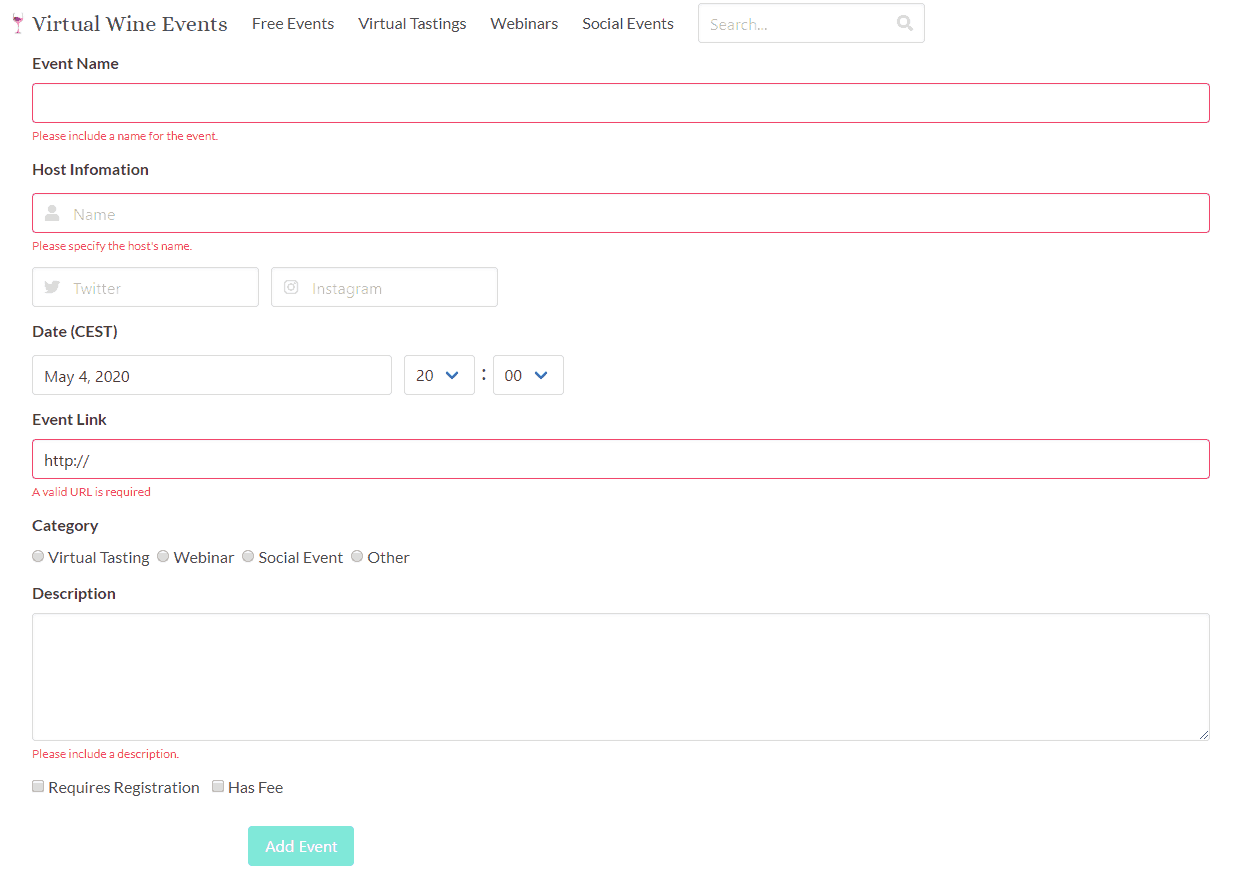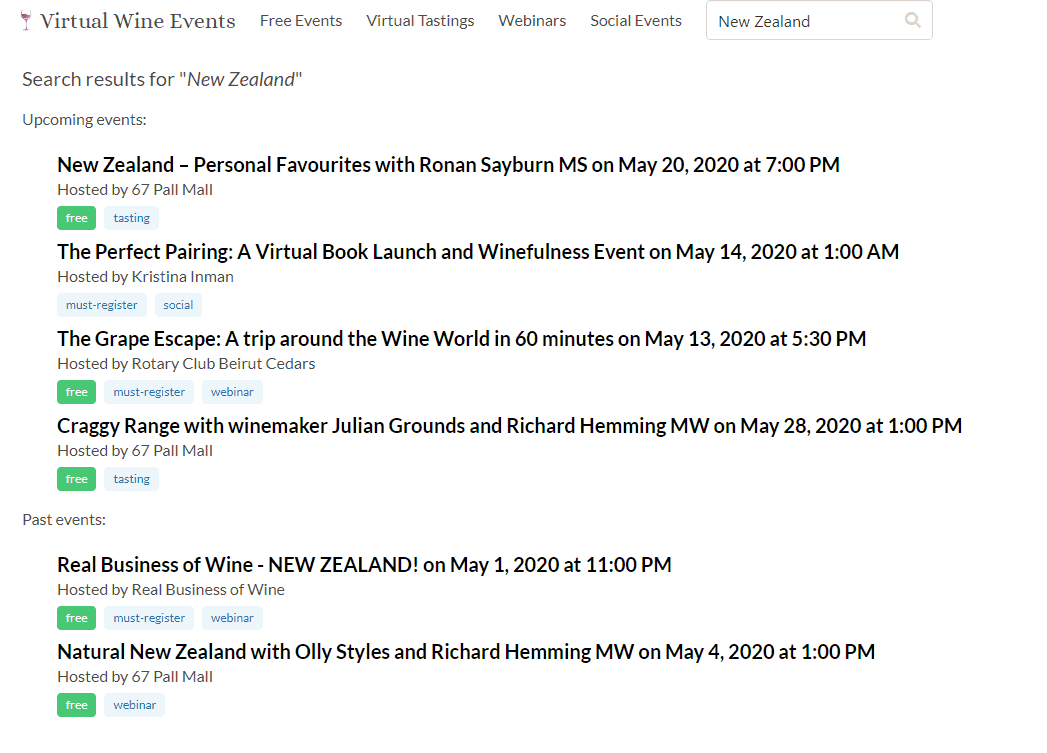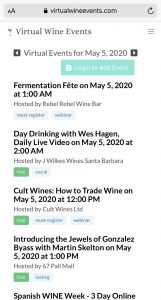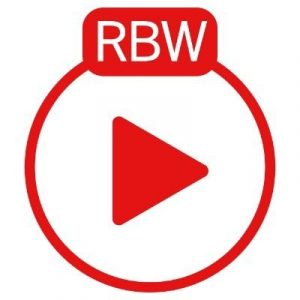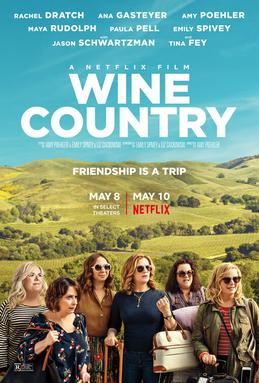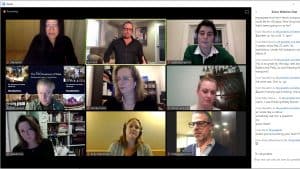Recently I moderated a virtual blind tasting sponsored by the California company, Lifetime Vintage. Being in Europe, I wasn’t able to sample the wines myself, so I got to play detective. I listened to Kendeigh Worden of The Grape Grind, Noelle Harman of Outwines, Jeff Burrows of FoodWineClick, Lauren Walsh of The Swirling Dervish and Dylan Robbins, CEO of Lifetime Vintage, describe on Zoom–from across four different states and an ocean–the wines they were tasting.
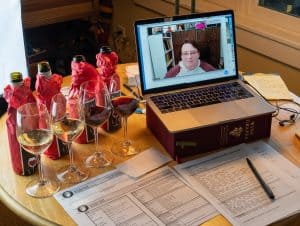
Photo courtesy of Jeff at foodwineclick.com
We broke it out into two sessions, which Lifetime Vintage recorded–the first covering two whites and the second on two reds. So you can watch the fun yourself, but I’ll give you a little spoiler–I sucked!
Well, kinda. I got 1 out of the 4 right and was in the ballpark for a few others. But I still learned a lot with the most significant takeaway being that if you’re a wine student in the US, you absolutely need to check out Lifetime Vintage’s Blind Tasting program.
Seriously.
Now I’ll note that even though Lifetime Vintage sponsored the Zoom tasting by hosting it and sending Kendeigh, Noelle, Jeff and Lauren their kits, this is a wholly full-throated and unbridled endorsement. The only compensation that I’ve received was a huge amount of FOMO and jealousy over not being able to use this service myself.
I’m not kidding.
If I were still in the US, I would be all over this because it is, by far, one of the best study tools for blind tasting that I’ve come across.
At the beginning of the first video on white wines, Dylan explained the concept behind the kits. But I’ll give you a little summary here and why I find this so awesome.
1.) They have a network of retailers in 44 states so they can coordinate sending the same wines to study groups across the country.
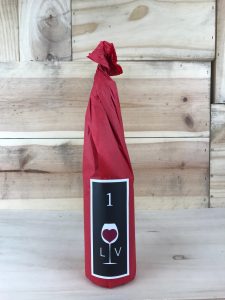
Photo courtesy of Lifetime Vintage
Sadly, the archaic wine laws of Illinois, Pennsylvania, New Hampshire, Kentucky, Alabama and Utah still have those states on the sideline. Though it sounds like maybe Illinois might be able to join the party eventually.
But think about this and what potential it opens up with your studies.
Nearly every Master Sommelier and Master of Wine will harp on the benefits of study groups. Even if you are only reaching for the CMS Advance or WSET Diploma level, you can’t overstate the value in sharing ideas and approaches with peers. However, time and distance will always be hurdles when it comes to getting a group together. But with digital platforms like Zoom and Lifetime Vintage doing the logistical legwork, you could set up a tasting group with folks almost anywhere in the US.
This is also a boon for wine educators as well. You could have an instructor in New York hosting a tasting with students in Washington, Colorado, Texas, etc. And everyone will have the same wine to taste and experience. As someone very familiar with how much of a colossal headache the American three-tier system is, I’m in awe at the amount of behind the scenes work that the Lifetime Vintage team had to put in to get this network together.
But it gets even better.
2.) They will curate the bundles based on what you want or need to study.
This was a jaw-dropper for me. I honestly don’t know how long they are willing to do this without eventually raising the price. But this is huge for wine students. Think of all the things that are usually trouble spots for blind tasting.
The evil dwarves of Albariño, Grüner Veltliner, Pinot gris and Chenin.
The numerous laterals of wines that show raisination–Syrah, Grenache, Corvina, Zinfandel.
Pinot noir vs. Gamay.
Brunello vs Barolo.
The strange way that all the red Bordeaux varieties can be so different yet so similar.
You could have Lifetime Vintage come up with a 4 or 6 bottle set for any of that–just email them before you place your order. For those studying for the WSET Diploma D3 Wines of the World exam, you could ask for wines covering the four kinds of flights you’ll get.
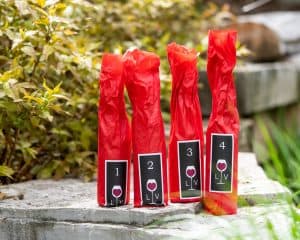
Protip: You could make your own mock D3 exam with two of the 6 bottle sets. (And get free shipping too)
Three wines from the same grape variety. (Usually different regions.)
Three wines from the same country. (Usually different varieties or winemaking styles.)
Three wines from the same region. (Usually different quality levels or winemaking styles.)
Three unrelated wines. (Hodgepodge Free for All!)
And, of course, you could also use this for non-study fun. As Lauren noted in her write up, these are perfect for hosting a kick-ass, hassle-free tasting party. If you want to do something with friends and family from across the country, you could ask for easy well-known wine styles (NZ Sauv. blanc, Buttery Chard, Napa Cab, etc.) Or all red wines. All whites, rose, sweet wines, whatever.
I mean, if Lifetime Vintage is going to do the logistical legwork of getting these kits together, then why not?
3.) The wines come in half bottles and all are exam quality.
Now, this does yield some limitations since not every wine is offered in this format. But times are changing and wineries are getting smart to the idea that 375ml bottles provide a lot of value. Not only do they fit in with the move towards moderation, but they also limit waste and the need to have a Coravin.
Sure, if you’re doing the six-bottle set all at once, you may still want to Coravin. But resealing and consuming four half-bottles over 2 to 3 days is not going to be a challenge for many wine lovers. And if you’re doing something like what we did with 2 whites one night and 2 reds the next, it’s even easier to ensure that there is no waste.
So How Much?
Right now, the basic four bottle sets are $95 each and the six-bottle sets $135. That’s an average of $23.75 and $22.75 a bottle, respectively. There is also a premium four bottle bundle for $150 ($37.50 bottle ave). While they will curate for free with the basic sets a lot of different things, if you’re asking for something like a Sangio vs. Nebbiolo battle, you’re probably going to be in the premium range.
On top of the base cost, there is a $6.99 procurement fee (same for both 4 & 6 bottle sets). For orders over $195, it’s free shipping, but orders less than that there is a cost. I tested it with my old address in Washington and the shipping was $22.99.
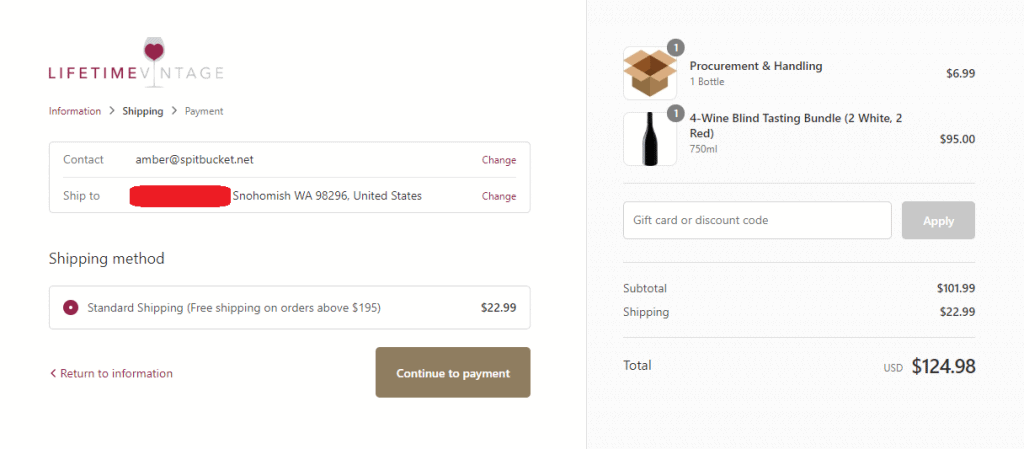
The Nitty Gritty
Based on the wines for our Zoom event, the quality level more than lives up to the price. Jeff of FoodWineClick did the math and noted that the retail price for the four bottles we got in our set came out to $75. Of course, that’s across several different retailers since the odds of finding them all at the same shop are low.
So essentially for that extra cost, you’re paying for:
The curation and preparation of the sets for blind tasting.
The legal and technical logistics of the LV team working with multiple retailers in 44 states to procure the wines and send them to different locations.
The convenience of shipping and home delivery.
As a wine student, think of how much we’re spending already procuring and tasting wines. Think of how tough it is trying to blind taste wines by yourself. To have someone do a lot of that work for you is an immense benefit that is well worth the cost. In one of the videos, I told Dylan of Lifetime Vintage that I honestly think he’s undercharging for his service-especially when you think of what other services like SommSelect charge.
With SommSelect, it’s a monthly subscription locking you into $199 for six bottles.
And these are full 750ml bottles (3 whites, 3 reds). So you pretty much have to use a Coravin or you’re likely going to waste wine. Now, yes, you do get the tasting notes and tips from Master Sommelier Ian Cauble, but it’s still a substantial cost ($2400 a year). While I enjoyed using the SommSelect kits when I was in the States, I ultimately had to drop it because it was just too much.
For almost half of that $2400, I could get 10 of the four bottle Lifetime Vintage blind tasting bundles tailored to what I need to study. At this point in my journey, I don’t need to be blinded on New Zealand Sauvignon blanc, off-dry Mosel Riesling, Alsatian Gewurztraminer or Napa Cabernet Sauvignon. I’m nailing those pretty regularly.
But I still have tons of blind spots and laterals that keep biting me. If I was in the US, you better believe that I would be a frequent customer of Lifetime Vintage. It’s one of the best investments that any wine student could make for their studies.

